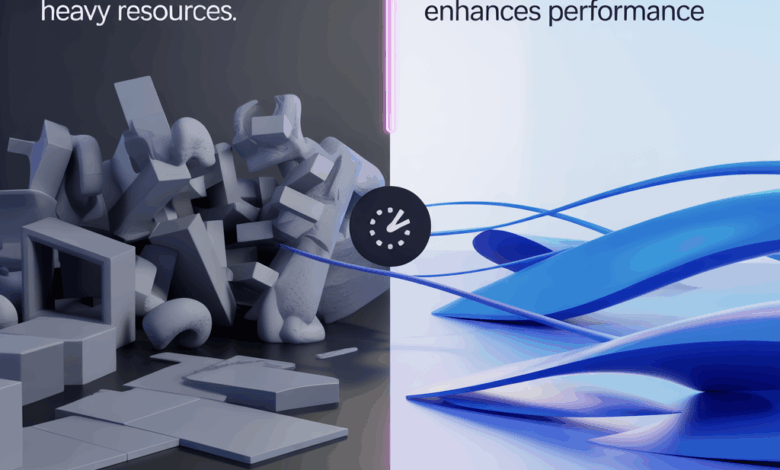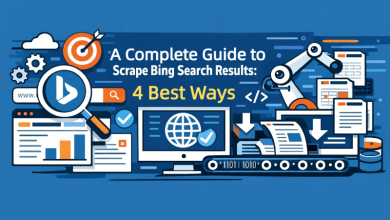
Do 3D Animations Hurt Website Performance? Myths vs. Facts
3D animations are everywhere in web design. They pull the eye, keep people engaged, and make brands feel refined. But the concern is real. Still, the concern lingers. Do they slow down websites? Do they hurt SEO? Do they drive visitors away before the page even loads?
The doubt makes sense. Speed decides everything. A slow site loses people in seconds, no matter how polished it looks. That’s the challenge: balancing strong visuals with fast performance.
The short answer is no. 3D doesn’t hurt speed if you use it right. The longer answer needs context. In this guide, we explain the myths, the facts, and how you can use 3D without putting your site at risk.
The Myth That Never Dies
The common belief is simple, “3D makes websites slow”. Clients often worry a product demo or animated landing page will tank performance. Beginners assume Google will punish them for using too many effects.
The truth is more boring. Sites become heavy because of poor decisions. Oversized models, uncompressed textures, or bloated scripts make the experience painful. It is not the animation itself. It is how you prepare it.
Modern tools have changed the game. WebGL, Three.js, and optimized 3D workflows allow animations to run smoothly without dragging speed. The problem is rarely the technology. It’s the lack of care in how it gets used.
The Fact Behind Modern 3D
3D does not have to hurt speed. With modern tools, animations can run smoothly even on budget devices. Compression techniques, efficient libraries like Three.js, and GPU rendering cut weight dramatically.
There are countless examples of lightweight 3D websites. Well-optimized models can load faster than poorly compressed video backgrounds.
Smart developers balance beauty and speed, which is why some of the most immersive sites today still score high on performance audits.
This is also where professional help makes a difference. Many brands now turn to 3d video animation services. These services know how to design stunning visuals without killing load times.
They test across devices, compress files properly, and deliver assets that are ready for the web.
When done right, the result is a smooth website that looks alive but still loads quickly. It is not a trade-off. It is about knowing the right techniques.
Where Performance Problems Start
If your site feels slow after adding 3D, the problem usually falls into one of these areas:
- Oversized textures, models, or video loops
- Missing lazy loading or caching rules
- Heavy scripts that block rendering
- Weak hosting with low server response time
- Skipping mobile and cross-device testing
These are preventable issues. The best 3d video animation services know them well. They cut away bloat, build assets for efficiency, and test performance in real-world conditions before launch.
How to Keep Animations Smooth
You can run 3D without destroying speed. The principles are straightforward.
- Compress and optimize all models before launch
- Keep motion effects purposeful, not constant distractions
- Use GPU-accelerated rendering frameworks like WebGL or Three.js
- Preload only critical assets, lazy-load the rest
- Pair your site with a global CDN for fast delivery
These rules are simple but often ignored. Following them means you can keep animations engaging while staying within Core Web Vitals.
SEO and User Experience Factors
Google does not punish websites for using 3D. It punishes websites for being slow. Core Web Vitals track loading, interactivity, and stability. That is what matters.
Users also care less about the effect itself and more about how it feels. If 3D adds clarity, they engage. If it creates lag, they leave. Good design is balanced.
For smaller teams or freelancers, tools now exist to make production easier. Many use 3d animation software for Chromebook as a lightweight way to create assets without needing a high-end workstation.
This makes 3D more accessible while keeping files lean enough for fast web use.
The rise of simple, browser-friendly tools is one reason more websites are safely using 3D today. It is easier than ever to build animations that look good and still respect performance budgets.
When 3D Is Worth It
Not every website needs heavy visual effects. But in some industries, 3D can be the difference between bland and memorable.
- Product demos where users interact with a model
- Architecture sites where buildings come alive in 3D
- Education platforms that explain concepts with interactive visuals
- Healthcare and retail platforms where engagement is critical
Tools like 3d animation software for Chromebook make experimentation easier for smaller projects. For enterprise-level campaigns, professional studios handle it at scale. The choice depends on the brand, the budget, and the goals.
Used well, 3D gives visitors a reason to stay longer and connect deeper.
Myths vs. Facts Recap
Myths spread faster than facts. Here is the real breakdown.
| Myth | Fact |
| All 3D slows websites | Bad optimization slows websites |
| Google penalizes 3D | Google penalizes poor loading speed, not visuals |
| 3D is always heavy | Modern tools make 3D lightweight |
| Animations kill mobile experience | Optimized 3D adapts well with responsive design |
| 3D requires huge budgets | Scalable tools and services make it affordable today |
| Visitors hate waiting for effects | Smart loading keeps users engaged without delay |
| 3D can’t work with SEO | Proper setup keeps both visuals and SEO aligned |
| Only big brands can use 3D | Even small sites use lightweight animations to stand out |
The difference is clear. It is not about avoiding 3D. It is about using it responsibly.
Closing Thoughts
3D animations are not the enemy of performance. Poor planning is. The internet is moving toward more immersive and interactive visuals. This trend will not reverse.
The best designers are not asking if they should use 3D. They are asking how to use it without breaking the speed limit. The answer is always the same. Optimize, test, and keep the user first.
What matters most is balance. A fast site with flat visuals feels dull. A slow site packed with effects feels frustrating. The real value comes when creativity and speed work together.


